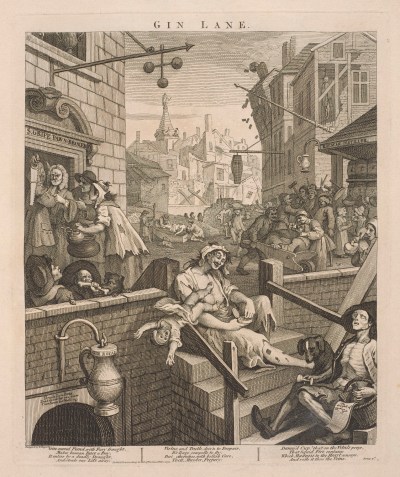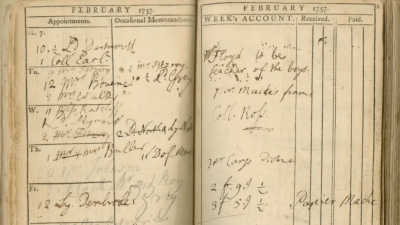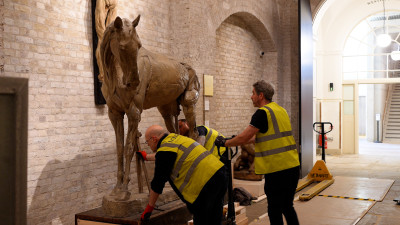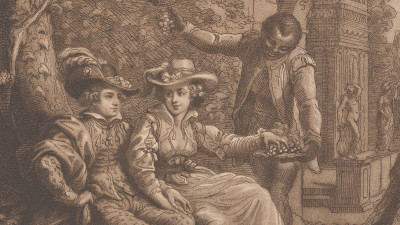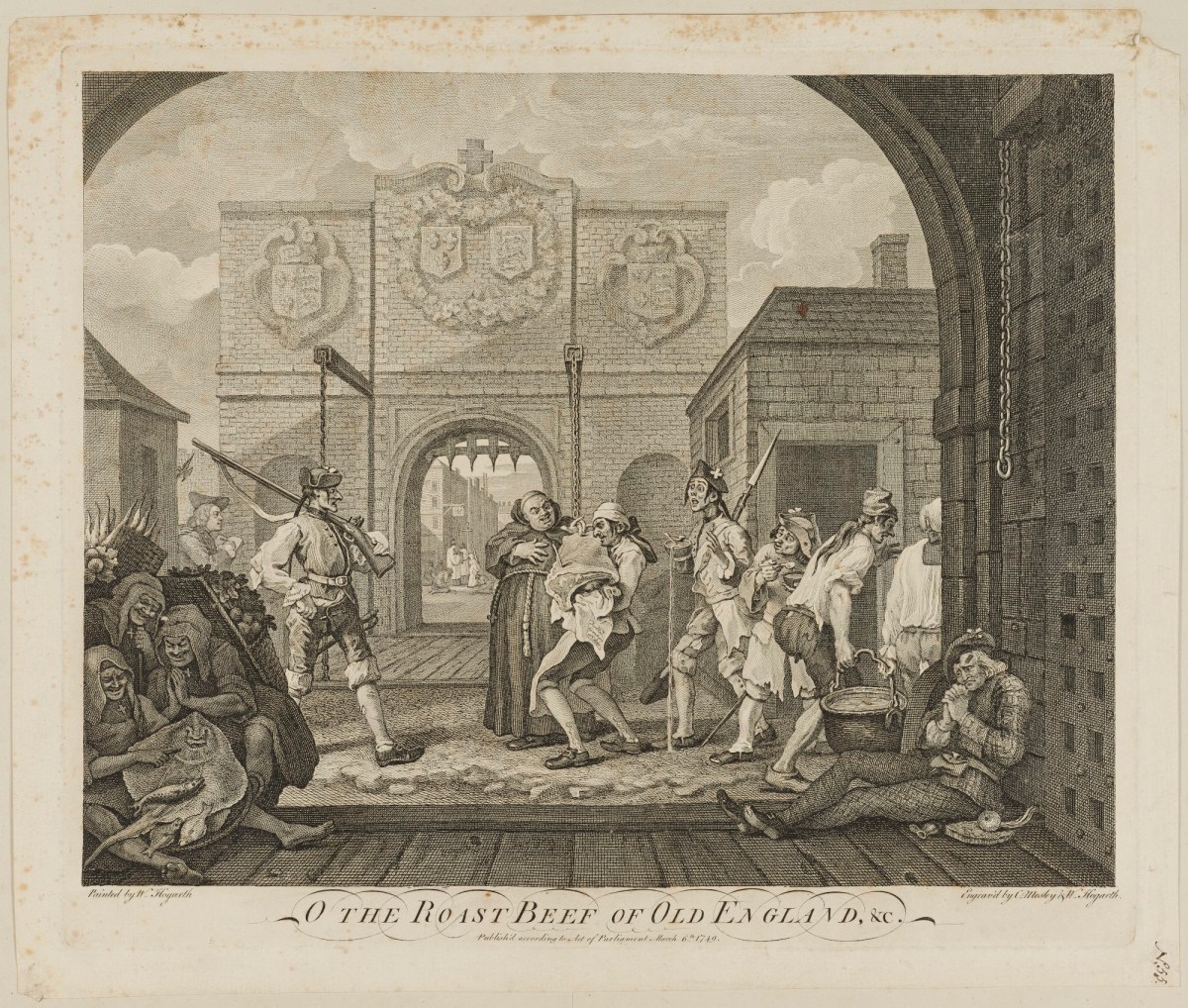
William Hogarth, The Gate of Calais, or the Roast Beef of Old England, 1749.
385 mm x 460 mm. © Photo: Royal Academy of Arts, London. Photographer: Prudence Cuming Associates Limited.
This image is not available to download. To licence this image for commercial purposes, contact our Picture Library at picturelibrary@royalacademy.org.uk
The Gate of Calais, or the Roast Beef of Old England, 1749
William Hogarth (1697 - 1764)
RA Collection: Art
Engraving of William Hogarth's painting The Calais Gate (1748-9, Tate Britain), which was painted in the aftermath of Hogarth's 1748 visit to France. On the way home he was arrested at Calais as a suspected spy after trying to sketch the town's ancient drawbridge. This scene takes place in that location (Hogarth includes a self-portrait of himself sketching on the left side) and satirises the French and Catholicism. In the centre a fat friar (modelled on Hogarth's friend, the engraver John Pine) fingers a huge piece of beef while all numerous poor and emaciated figures are in desparate need of food. These include Scottish and Irish soldiers, clearly Jacobite exiles.
The alternative title, 'O the Roast Beef of Old England' is taken from a patriotic song by Hogarth's friend Richard Liveridge, which expresses the same anti-French and anti-Jacobite sentiments found in this print.
Object details
385 mm x 460 mm
Hogarth's prints. Vol. I. - [s.l.]: [n.d.]
Associated works of art
1 results
Start exploring the RA Collection
- Explore art works, paint-smeared palettes, scribbled letters and more...
- Artists and architects have run the RA for 250 years.
Our Collection is a record of them.

